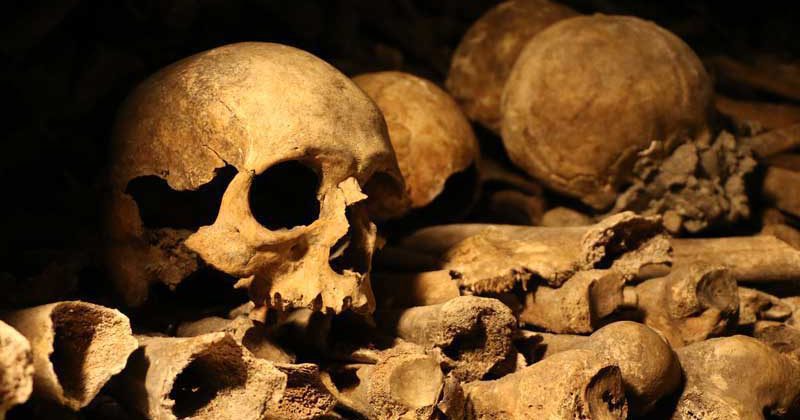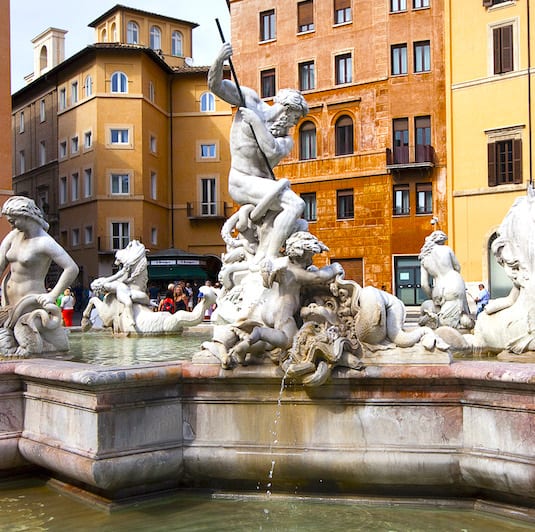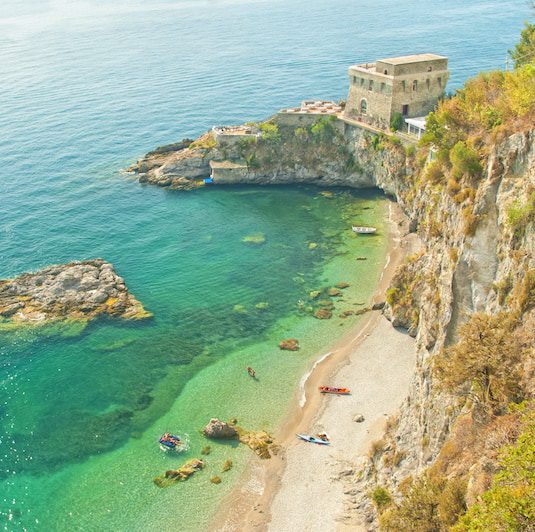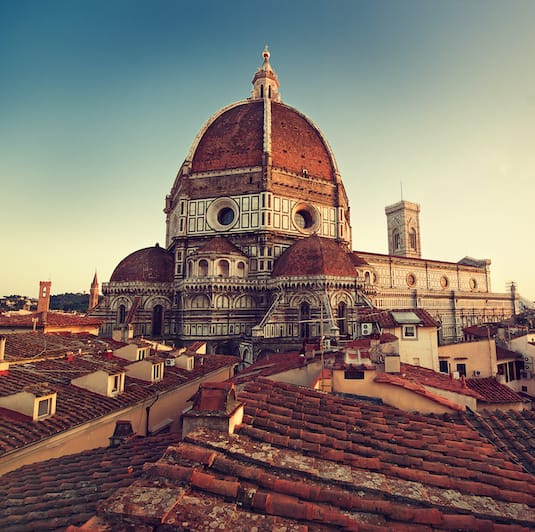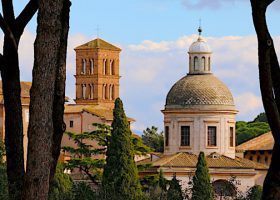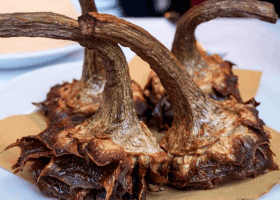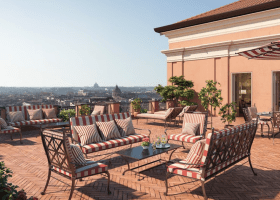When traveling to Rome, most people visit the most popular sites, like the Vatican or Colosseum. They simply don’t know of the many other really beautiful places worth seeing. If you’re looking for a more hidden experience in Rome, consider this eerie Roman site. In this guide, discover the story behind the Capuchin Crypts and how you can visit.
Pro Tip: Planning your trip to Rome? Bookmark this post in your browser so you can easily find it when you’re in the city. See our guide to Rome for more resources to help you plan your trip. Also, check out our Rome tours for the best skip-the-line experiences and our Rome Catacombs Tour with Capuchin Crypts.
The Capuchin Crypts of Rome
The Capuchin Crypts, also known as the ossuary, contain the skeletal remains of 3,700 friars buried between 1500 and 1870. Incredibly, all five crypts are decorated entirely in human bones.
The interior is dimly lit by small fluorescent bulbs and a small amount of natural light that gets in through the cracks—it makes for a dramatic experience. Can you imagine visiting the Capuchin Crypts at night! In this guide, find out more about the history of the Capuchin Crypts and how you can visit.
Religious Significance of the Capuchin Crypts
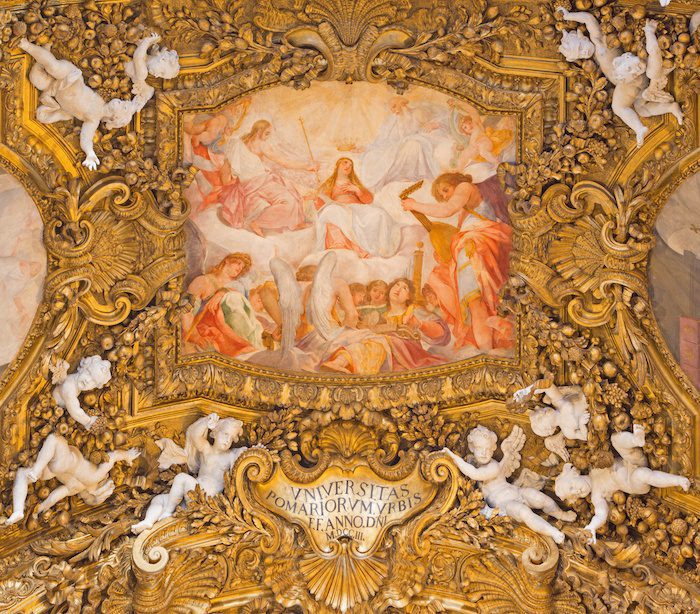
You might think it’s terribly morbid, but once inside the crypts you will be captivated by the magic of these unique rooms. The Roman Catholic Church insists that the display is not meant to be macabre, but rather a positive vision of the Christian sense of human life and its future resurrection.
According to Christian tradition, bones are considered to be the seed of the resurrection of the bodies after the Final Judgement. Michelangelo’s Sistine Chapel is a perfect picture of that moment. In his mural, you will see the angels playing trumpets that announce the Final Judgement, while souls ascend to heaven and recompose themselves as their bones are recovered in flesh.
Bones are the last significant earthly trace of the dead when their flesh has already turned to dust. Human bones are not only funereal symbols, but also images of faith in the resurrection. In other cultures, their ritual use is related to overcoming the fear of death.
Bones are, in a certain sense, indestructible and, in favorable conditions, they can be preserved for centuries. In Freemasonry or Masonry, a skull and two crossbones, besides being a pirate symbol, symbolizes the victory of spirit over body.
Who Were the Capuchins?
One of the most important orders of friars in the Catholic Church, the Capuchins are an offshoot of the Franciscans. Visiting the crypts also includes a museum divided into eight rooms. It was created with the aim of highlighting the spirituality of a religious order based on an intense mysticism: a simple and sober way of life, a constant closeness to people, and a strong yet gentle spirit of brotherhood.
In addition, the museum explains the history and art of the Roman Capuchin order, which is more than 500 years old. The rooms were not only created to exhibit works of art but also for their preservation.
Top Colosseum Tours
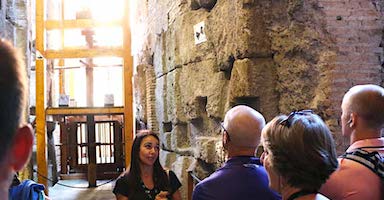
Best Seller
Colosseum Underground Tour with Roman Forum and Palatine Hill
Only 2% of visitors to the Colosseum are able to see the Underground, making tours a rare, exclusive experience. Our tours give you access to the Underground, Arena Floor, and first and second tiers—areas most people never see. Skip the line and enjoy priority access, guided by an expert who brings the Colosseum’s rich history to life. These spots sell out quickly, so don’t wait—secure your place now for this unforgettable opportunity.
See Prices
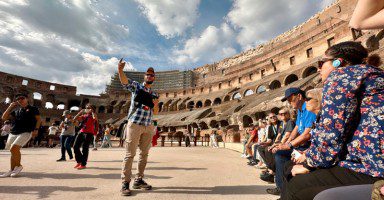
Customer Favorite
Special Access Colosseum Arena Floor Tour Through the Gladiator’s Gate
Reaching the Colosseum’s Arena Floor is no easy feat; tickets sell out quickly, leaving most visitors stuck in crowded corridors with limited views. With us, bypass the lines and enter through the Gladiator’s Gate to stand on the Arena Floor, giving you a front-row view of Rome’s nearly 2,000-year-old symbol of power and glory. With your friendly guide, uncover the Colosseum’s brutal past, then continue to the Roman Forum and Palatine Hill to explore the epicenter of ancient Roman life.
See Prices
Not ready to book a tour? Check out our Rome Guide for more info.
Where Does the Name of the Order Come From?
Contrary to popular belief, “Capuchin” does not come from cappuccino, the famous milky coffee best enjoyed with a tasty croissant. Instead, the name relates to the hooded garment Capuchin monks have always worn.
In 1208, Saint Francis of Assisi took to wearing an extremely modest tunic in the shape of a cross. This outfit, which he cut out himself and had a cord at the waist, gave him the appearance of an impoverished peasant. Some time later, the tunic received a cappuccio (Italian for hood) and so the name Capuchin followed. This is one of the special things you can see in the museum.
Returning to the crypts, we see that bones and skeletons have been used to exercise the fear of death and the brevity of earthly life. However, where did the bones of 4,000 friars come from?
History of the Capuchin Crypts
The Capuchin church in Via Veneto was built in 1626. Five years later, the Capuchins moved to their new building. With them. they carried the remains of the deceased Capuchins buried in their old home. The new structure included a church, a monastery, and a cemetery so small that when a new friar was buried, the old bones had to be removed and preserved in rooms under the crypts.
Over time, so many remains accumulated that they were used to decorate the vaults and walls. Unfortunately, we don’t know the identity of the artist, but according to legend, his bones are also part of the decorations.
All in all, the six crypts are decorated with skulls, jaws, ribs, scapulas, femurs, tibias, scrum bones, and vertebrae, which in some cases are arranged to represent Christian symbols.
How To Visit the Capuchin Crypts
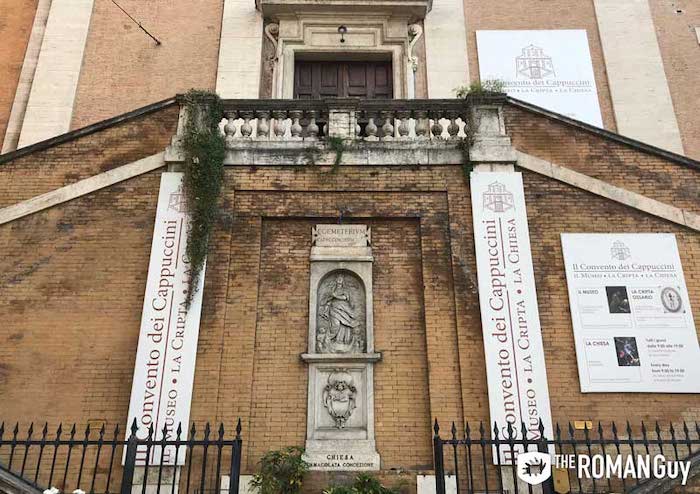
The Capuchin Crypts are located within 10-minute walking distance of both the Spanish Steps and Trevi Fountain in Rome. They are open every day from 10 am to 7 pm. Though you can visit the Crypts on a solo visit, we recommend going with an expert guide who can help you experience this site with engaging stories and local insight.
Address: Via Vittorio Veneto, 27 | Hours: Daily, 10 am – 7 pm
Not ready to book a tour? Check out our Rome Guide for more resources.
Here’s Where To Stay in Italy’s Most Popular Destinations
Rome, Florence, Venice, Amalfi Coast, and Capri

